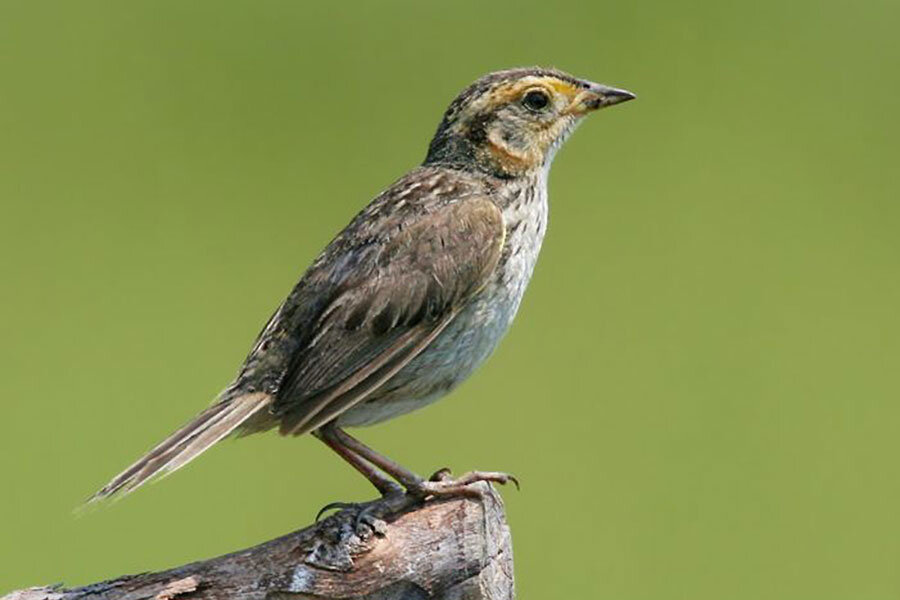This American sparrow could be gone in 50 years, say conservationists
Loading...
The saltmarsh sparrow could soon become the first bird to go extinct in the continental United States in more than eighty years, according to a new report from the Connecticut Audubon Society.
The population of saltmarsh sparrows, which reside on the East Coast from Maine to Virginia during the breeding season and migrate south in the winter, has dropped about 9 percent annually since 1998, researchers say. They attribute the waning population to rising sea levels and structures such as roads and railways, both of which have led to a loss of nesting areas for the half-ounce birds.
If nothing is done, scientists warn, the saltmarsh sparrow could be extinct in 50 years.
"It would be the first avian extinction in the continental US since the Heath Hen in 1931," wrote Milan Bull, the Connecticut Audubon Society's senior director of science and conservation, in the annual Connecticut State of Birds Report. "There's no way to characterize that as anything but a disaster."
While scientists have been able to identify the roots of the problem, finding a solution has proven more difficult, as Audubon magazine reported in August:
Millions of dollars have been spent rebuilding tens of thousands of acres of coastal wetlands, but research shows these efforts have done nothing to boost the sparrow’s populations. A study authored by [Chris Elphick, a conservation biologist at the University of Connecticut] last year found that many restoration efforts, particularly those in low-lying marshes, have failed to create more suitable nesting habitats. This is partly because the projects focus on conserving vegetation, not the sparrows. [...]
One way to build up the marshes’ resilience may be to manipulate manmade barriers without removing them completely. Elphick imagines having a controlled tidal system during the breeding season—one that keeps water from rushing in during the highest monthly tides, but allows sediment to build up naturally. That sort of project would be difficult to enact, Elphick admits: Scientists, agency officials, and eventually the public would all have to buy into it.
In the most recent report, the Connecticut Audubon Society calls on state officials to take steps to protect the endangered birds, such as setting aside funds to deal with the rising sea levels. It recommends that the state's Department of Environmental Protection be given enough funding to plan for landscapes that will allow the migration of tidal marshes inland.
Additionally, the group is urging land-use officials, private landowners, and conservation groups to find ways to maintain or expand appropriate nesting environments within existing forests or newly created or restored habitats.
Other recommendations include a collaboration between the Connecticut Audubon Society, the Department of Environmental Protection, the Audubon Connecticut group, the Connecticut Ornithological Association, and academic ornithologists to plan and fund a statewide survey of where birds breed.
Not all birds in Connecticut are struggling, according to the report. A regional effort to create and expand habitat for the New England cottontail rabbit has also benefited birds living in the same area.
But, Mr. Bull notes, "Despite some improvements, most of the trends aren't good."
And, researchers say, the plight of the saltmarsh sparrow could likely signal trouble for other species living in similar habitats.
"It acts kind of like the proverbial canary in the coal mine in that it’s an indicator of what’s gonna happen to the rest of the system, all of the other species," Ephrick, of the University of Connecticut, told NPR affiliate WSHU.
This report includes material from the Associated Press.






